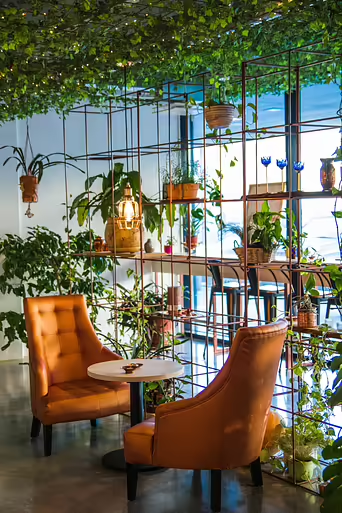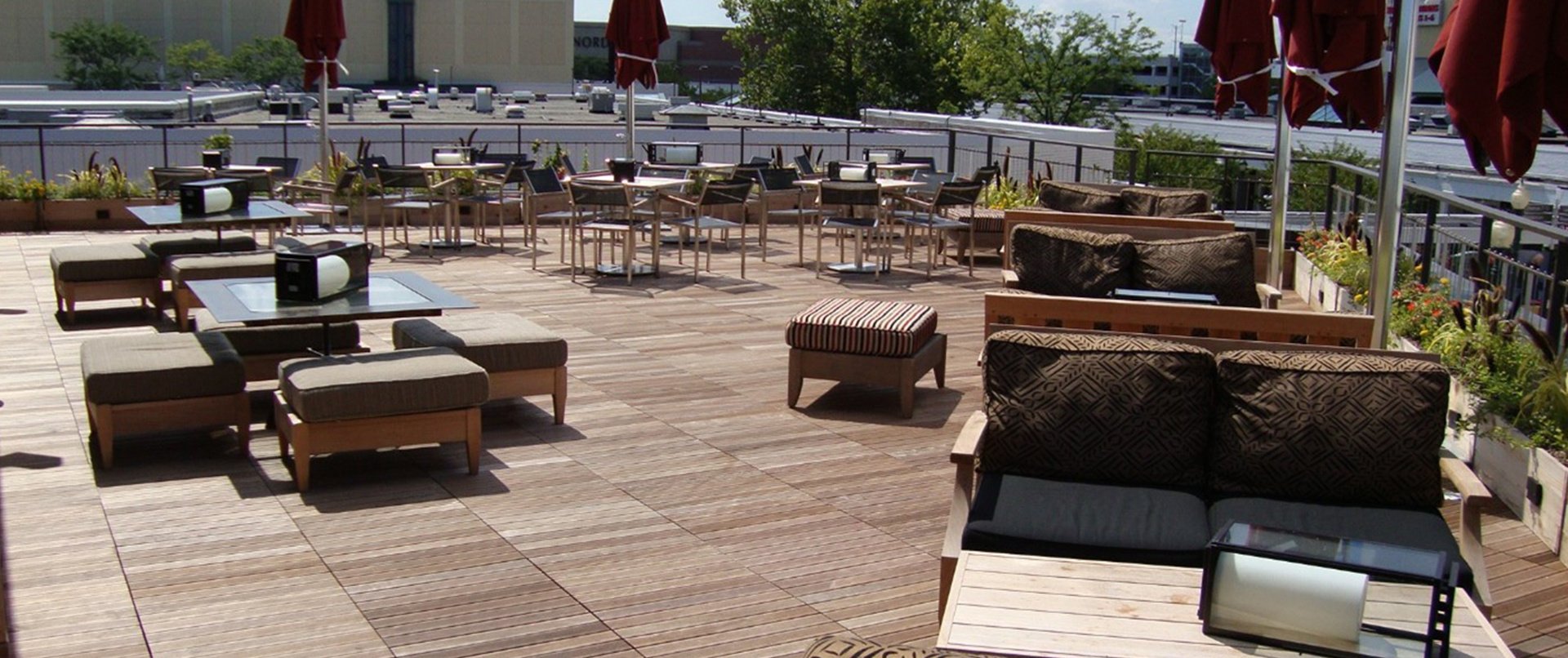Biophilic design in architecture is an emerging trend that introduces natural elements into the built environment, such as incorporating green spaces, water features, and natural materials. These components make people feel more relaxed and can even improve mental clarity. Biophilic design reduces stress levels by encouraging occupants to be present in their current environment and to experience a sense of connection with nature.
Green spaces offer an opportunity for occupants to enjoy outdoor recreation and nature-based activities, which can help support creativity and imagination. Incorporating views of plants or water features can also provide a sense of respite from the hustle and bustle of city life. Natural materials such as wood or stone can give a calming atmosphere that helps to foster revived energy levels throughout the day.
Beyond providing positive psychological effects on people, biophilic design also has several practical benefits, such as improving air quality and reducing energy consumption due to natural shading or passive heating systems. Architecture firms continue exploring new ways to integrate biophilic design principles into their projects to create healthier, more sustainable buildings.
.jpg?width=1920&height=806&name=childrenshospitaloc_1%20(1).jpg)
What are Biophilic Design Principles?
The three main categories of biophilic design principles are direct contact with nature, indirect contact with nature, and virtual contact with nature.
Direct Contact With Nature
Direct contact involves incorporating elements of the natural world directly into the environment. For example, adding live plants or water features to an interior space.
Indirect Contact With Nature
Indirect contact involves connecting the indoor environment with natural elements outside it. An example is providing windows or balconies with views of trees or gardens.
Virtual Contact With Nature
Virtual contact involves using technology to simulate a connection to nature. An example is displaying images or videos of natural scenes on screens indoors.
By introducing these elements, architects and urban planners can create buildings and cities that foster deeper connections with nature.
Biophilic Health Benefits
Research has suggested that biophilic health benefits come from the physical characteristics of natural environments, such as open sky views, sunlight, water features, greenery, and running streams. These elements connect individuals with the outdoors by providing visual stimulation and tactile experiences like touching plants or feeling water droplets. This connection helps people feel safe and secure while promoting mental clarity and emotional balance.
People often report feeling improvements in physical and psychological well-being when exposed to nature or elements of the natural environment. Studies have shown that contact with nature can reduce stress levels, improve mood, and give a sense of calmness and relaxation. Improved cognitive functioning, better self-reported health, and faster recovery from illness or surgery are linked to exposure to nature.
The mental health effects of biophilic design are equally beneficial.
Exposure to nature:
- Reduces anxiety
- Increase happiness
- Decreases aggressive behavior in children and adolescents
- Boosts creativity
- Enhances problem-solving skills
- Increases attentional focus in adults
- Elevates resting heart rate variability
Nature also promotes positive social interactions by creating a calming atmosphere where people feel more connected to one another. The physical characteristics of natural environments, such as open views of the sky or bodies of water, provide visual stimulation that encourages relaxation while enhancing creativity and problem-solving abilities.
.jpg?width=1920&height=806&name=celadonappts_1%20(1).jpg)
Is Biophilic Design Sustainable?
Studies have suggested that biophilic design can reduce energy consumption and provide environmental protection, such as reducing heat island effects and improving air quality. Green roofs, for example, can reduce building energy use by .7% compared to conventional roofs.
There is potential to increase biodiversity through incorporating green spaces into our cities which can promote improved citizen health and well-being outcomes.
Biophilic design in buildings also has the potential to limit waste production by reducing the need for synthetic materials and incorporating recycled materials into our buildings – increasing reuse opportunities within our built environments.
Biophilic design increases biodiversity within urban areas by providing habitats for birds, insects, and other species not typically found in urban areas, promoting a healthier planet overall.
Biophilic Design Examples
 Green walls using living plants or mosses to transform the space's aesthetic are a popular biophilic element already being used in public settings like hospitals or retail stores.
Green walls using living plants or mosses to transform the space's aesthetic are a popular biophilic element already being used in public settings like hospitals or retail stores.
Other biophilic design examples include creating outdoor spaces for employees with natural elements such as benches, trees, and water features and incorporating views of nature into buildings' interior spaces.
Natural lighting is considered an essential aspect of biophilic design. When possible, using skylights and large windows can bring natural light deeper into indoor spaces while also providing stunning views of the outdoors.
Materials that mimic natural textures, such as wood floors or stone accents on walls, can also create a more harmonious environment.
Biophilic design is an important concept that has the potential to improve the mental health and well-being of people living in urban areas by bringing elements of nature into their built environment. By incorporating these elements into the design process, architects and urban planners can create aesthetically pleasing, calming, and beneficial spaces for mental health.
Bison Works Closely with Architects on Biophilic Rooftop Design
Looking to learn more about biophilic design for rooftop decks? Access our free course for architects here. Want to see ideas for incorporating our products into your next rooftop deck project? Visit our project gallery.
Important Notice: Bison Innovative Products recommends that all rooftop deck systems should be installed by a licensed contractor with at least 2 years of proven experience. Plans/designs for a rooftop deck should be reviewed by a safety/structural engineer before commencing construction. The roof must be able to safely carry the static and live load weights of the rooftop deck, and any amenities added along with the appropriate density of any insulation to resist crushing and damaging the waterproof membrane. Adding items such as hardscaping features, hot tubs, or pools to a rooftop deck requires additional guidance and oversight from an engineer. Property owners should research and abide by any building codes and other regulations to obtain the required permits prior to having a rooftop deck installed. Please read all product specifications posted on Bisonip.com to review all information prior to any installation.
.png?width=100&height=100&name=BisonIP-logo-PMS425-2023%20(1).png)



